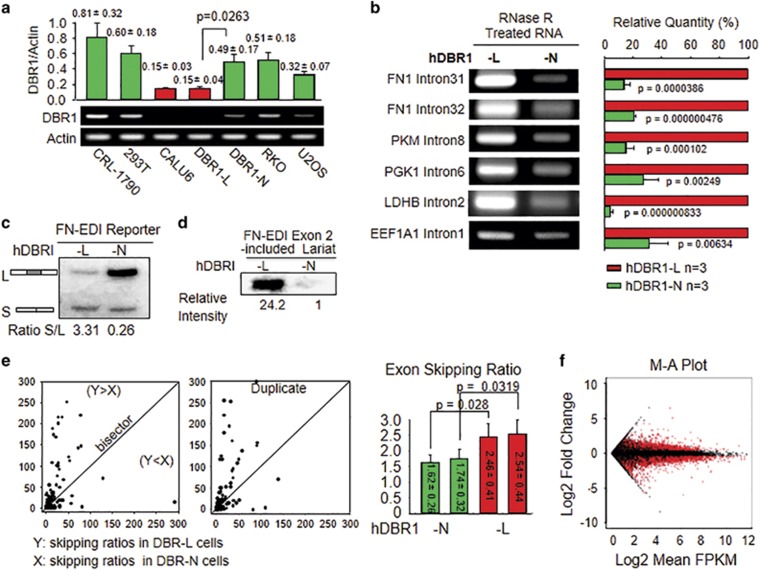Figure 3.
Deficiency of hDBR1 expression changes AS activities. (a) Among all the tested cell lines, Calu-6 cells expressed the lowest levels of DBR1 (P<0.05. All results came from three separate experiments, and the data are presented as the mean±s.d.). (b) Lariat RNA levels were higher in DBR1-L cells than in DBR1-N cells. Lariat-enriched RNA samples (Supplementary Figure S1b) were used to perform reverse transcription (RT) and quantitative real-time polymerase chain reactions (qPCRs). Lariat intron-specific primers were used to examine the levels of the corresponding lariats. The relative levels of lariat introns corresponding to different genes are shown in the right panel. Three separate experiments were performed. (c) hDBR1 increased the inclusion of FN-EDI reporter exons in artificial minigene-derived FN mRNAs. (d) hDBR1 promoted a low level of lariat introns, including exon 2 (the controls for the input RNA and the transfection efficiency of the AS reporter are shown in Supplementary Figure S1g). (e) For each exon, the exon-skipping ratio was significantly higher in DBR1-L cells than in DBR1-N cells (shown when the value of the y coordinate is greater than the value of the x coordinate). The right bar graph shows the average exon-skipping ratio. In each group, n=2229; the results are presented as the mean±SE. The reproducibility is shown in Supplementary Figure S1h. (f) The plot shows the log fold change of the normalized FPKM (DBR1-L over DBR1-N) versus the average log expression.

